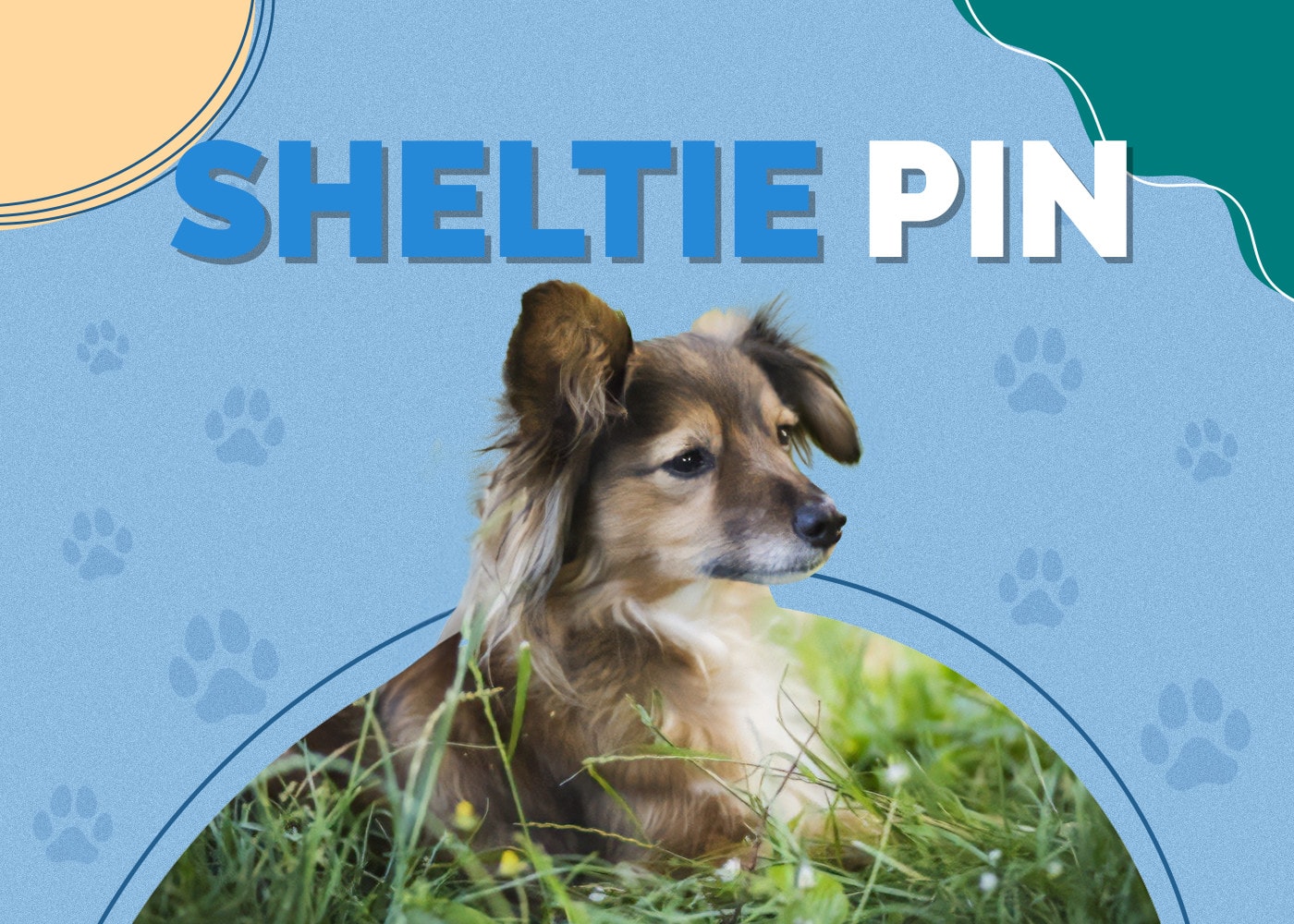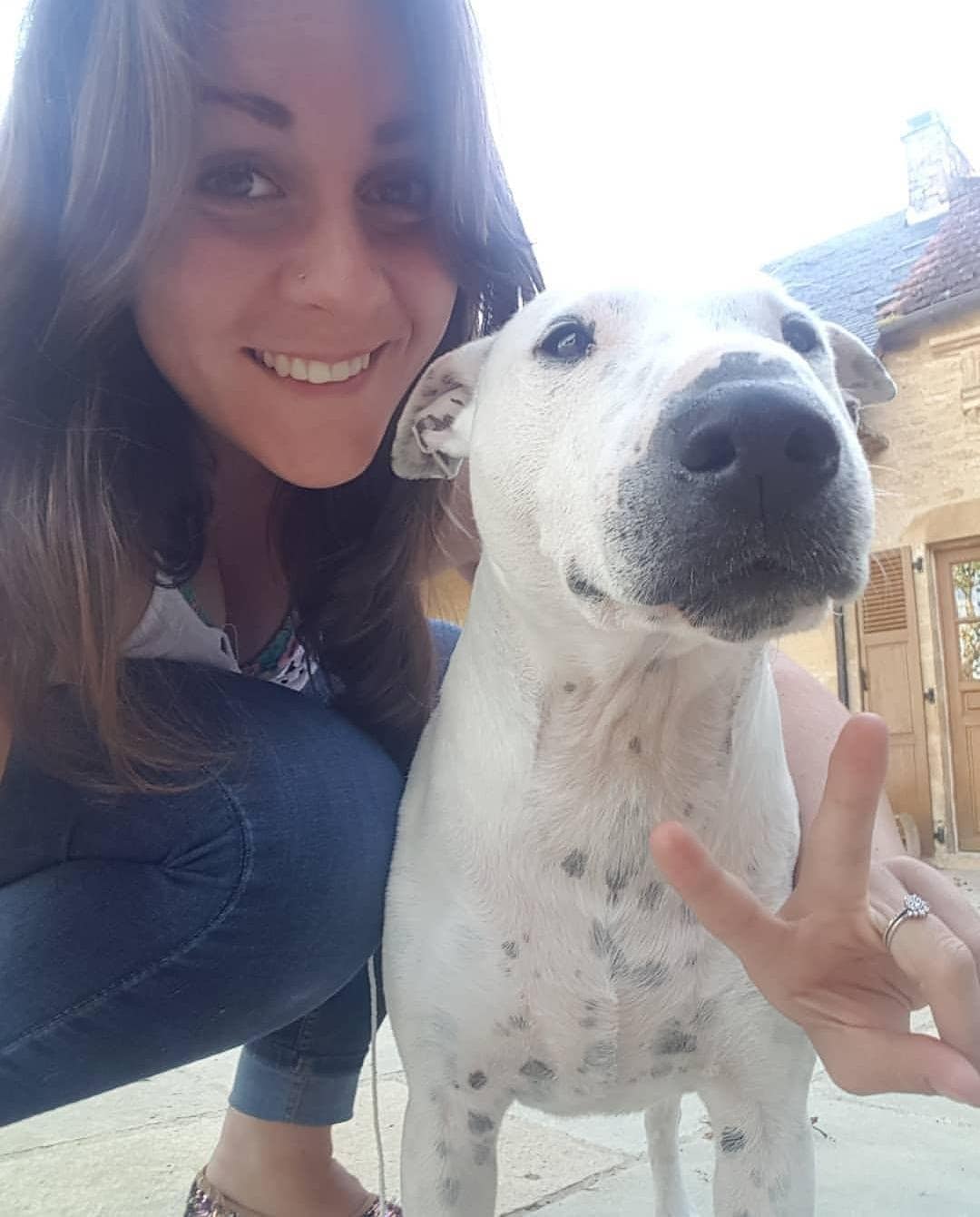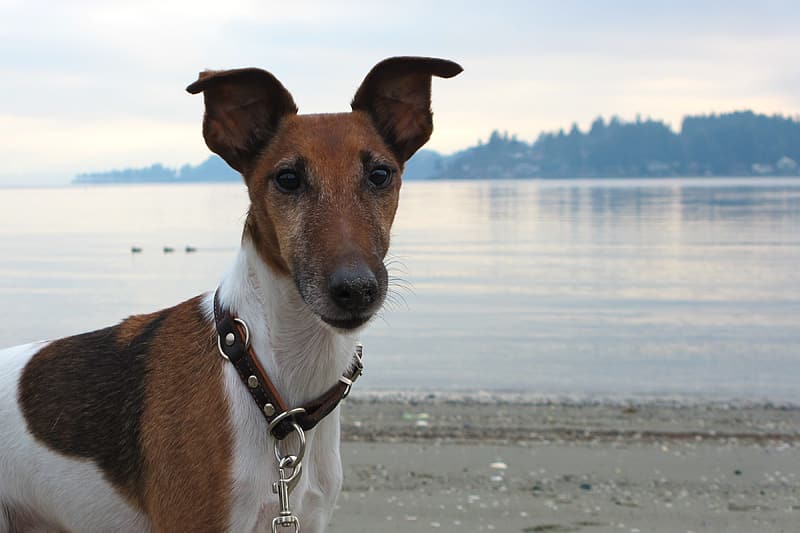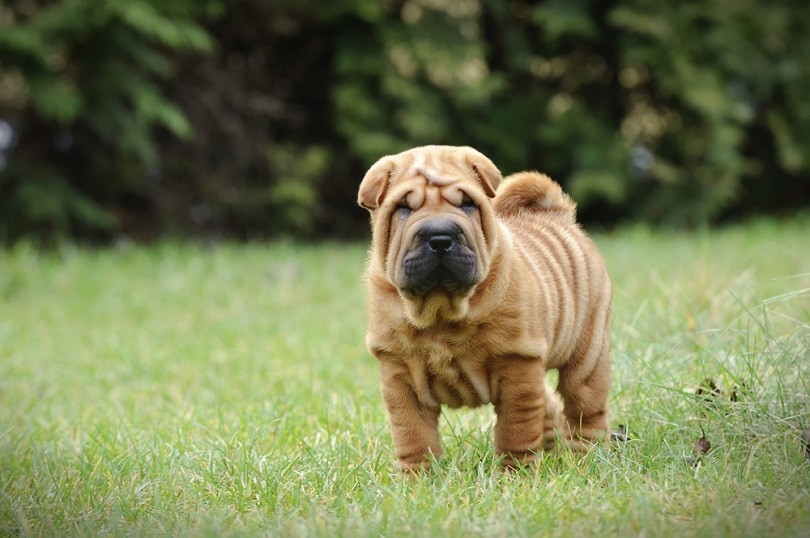Irish Dane (Irish Wolfhound & Great Dane Mix): Info, Pictures, Traits

Updated on
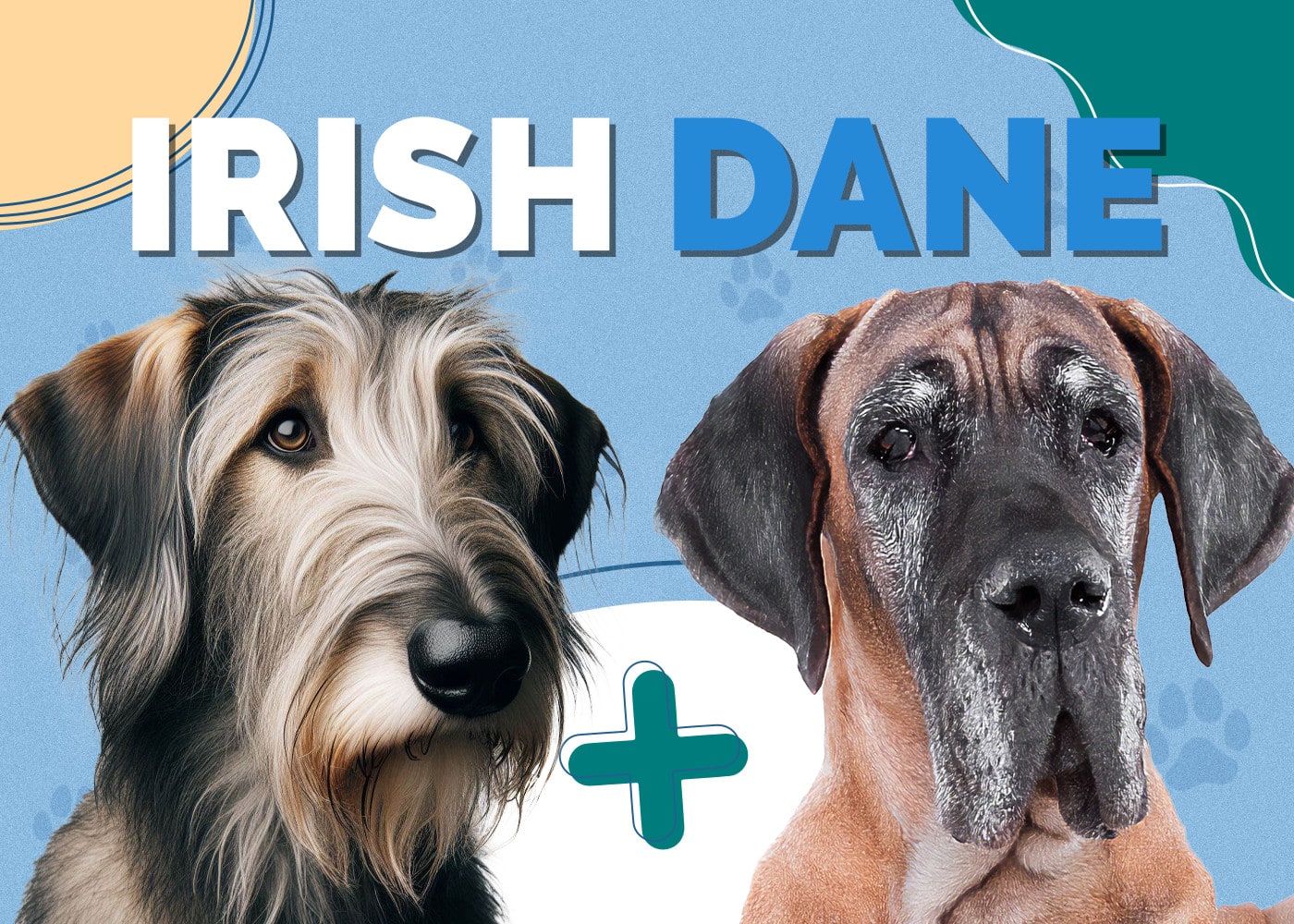
| Height: | 30–35 inches |
| Weight: | 100–150 pounds |
| Lifespan: | 7–10 years |
| Colors: | Brindle, sable, cream, red, black, gray, silver, faun, and white |
| Suitable for: | Families with a large amount of space |
| Temperament: | Loyal, loving, gentle, laidback |
If the idea of owning a big, lovably, and highly energetic dog interests you and you have plenty of space in your yard and a genuine love of exercise, an Irish Dane could be the dog for you. As far as designer dogs go, they don’t come much bigger or more energetic than the Irish Dane.
The Irish Dane is a hybrid dog resulting from crossing two of the biggest dogs around, the Irish Wolfhound and Great Dane. It is unknown when or where the Irish Dane was first developed, but the breed has grown significantly in popularity over the past 10 years.
When you first encounter a fully grown Irish Dane, it’s hard not to be intimidated. They stand up to 35 inches tall, weigh as much as 150 pounds, and have the sleek, muscular appearance of a professional athlete. Yet when you get to know them, you soon realize they’re big softies at heart.
 Irish Dane Puppies
Irish Dane Puppies
Irish Danes are beautiful dogs, and it is easy to see why owning one would appeal to many people. However, they won’t be for everyone, as they need a lot of space and daily exercise. For starters, Irish Danes aren’t great city dogs. To own one, you need at least a secure suburban yard or a rural property where they can run around.
You’ll also have to be up for plenty of exercise, as a short trot around the block won’t cut it with these dogs. They are loving and playful dogs that will make great pets for anyone with the space and energy for a gentle giant.
3 Little-Known Facts About the Irish Dane
1. Irish Danes Are Fantastic Jumpers
Not only do Irish Danes need a great deal of space to run around, but they also need a yard that has high fences. These dogs know how to jump, and once an Irish Dane realizes that they can get over your fence, you will have a hard time trying to stop them.
Of course, it’s not just the height of your fence that matters. Irish Danes are smart enough to use low walls, trash bins, or any other item left or located by the fence as a step or a springboard to get over even the tallest obstacle.
2. Irish Danes Come From Incredibly Old Bloodstock
The Irish Dane may be a relative newcomer as a breed, but their parent breeds, the Great Dane and Irish Wolfhound, have been around for centuries. The Great Dane is thought to have been developed as a hunting dog during ancient Roman times, and the Irish Wolfhound saw service as both a hunting and war dog as far back as the 1st century.
3. Despite Their Size, the Irish Dane Is Great With Children
Despite being considerably taller than most small children, the Irish Dane is gentle and loves spending time with children. They will happily tolerate a bit of poking, prodding, and even a little rough play, and when they’ve had enough, they’ll walk away without getting snappy.
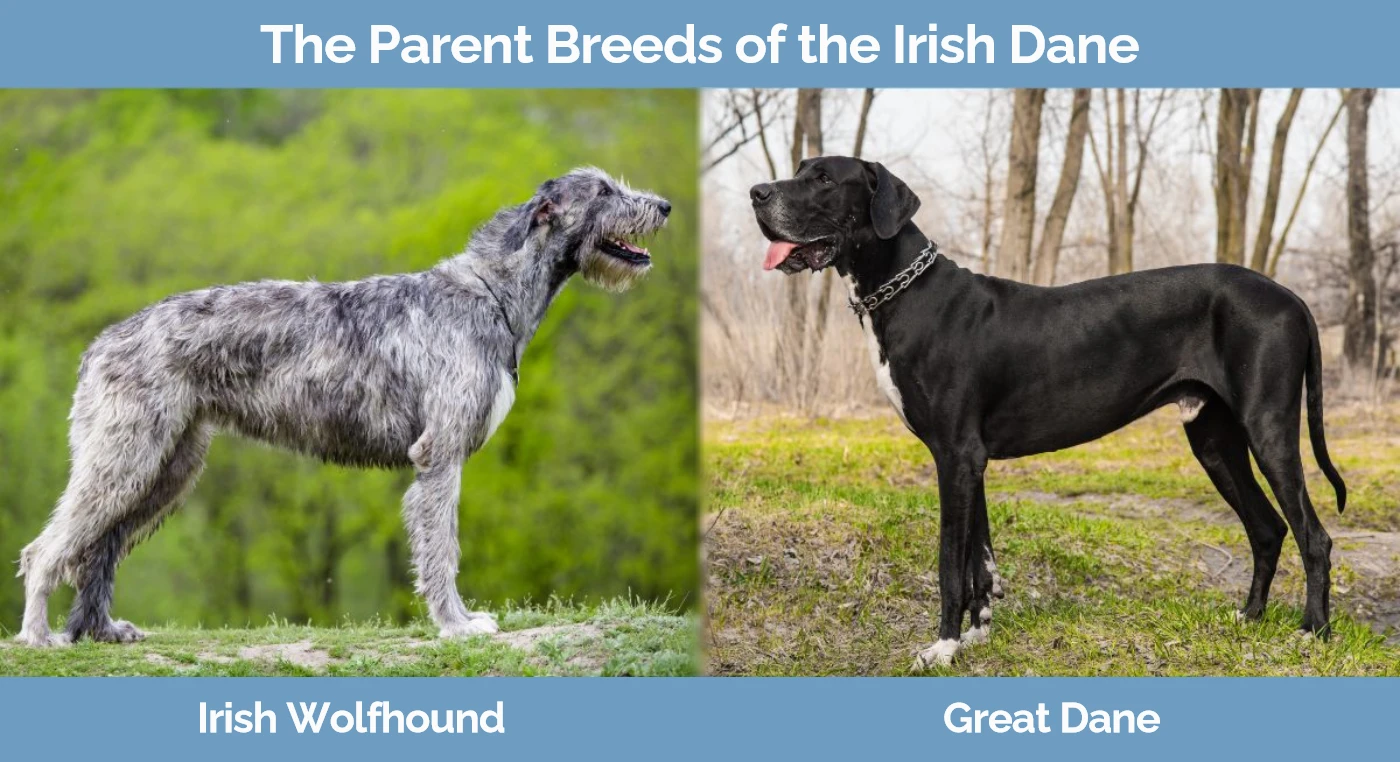
Temperament & Intelligence of the Irish Dane 🧠
Are These Dogs Good for Families? 🏡
Yes, as mentioned above, Irish Danes are great with children. The one thing to watch out for is that they can get overly excited and easily knock over a young child without meaning to.
They are also protective dogs that will fiercely defend their families and homes from anything or anybody whom they see as a threat. Their imposing size makes the Irish Dane a fantastic watchdog.
Does This Breed Get Along With Other Pets? 🐶 😽
Yes, Irish Danes tend to get on well with all members of their household, including any other pets you may have. However, introducing a new, fully grown Irish Dane into a house with a cat or two may be a little problematic. Not because the Irish Danes dislike cats but simply because their prey drive is such that they will chase small animals that they’re unfamiliar with, which will likely create anxiety for your cats.
Ideally, if you want to have cats and an Irish Dane, you should get both when they are young and allow them to grow up together. When raised with other animals, Irish Danes, like most dogs, will quickly see your other pets as part of their family.
 Things to Know When Owning an Irish Dane
Things to Know When Owning an Irish Dane
Food & Diet Requirements 🦴
When you have a dog as big as an Irish Dane, you know that you will go through a great deal of dog food. However, this should not be seen as a reason to skimp on quality, as Irish Danes need to be fed a well-balanced and nutritious dog food to live a happy and healthy life.
There are many dog food choices, but you will get the best value from a premium dry dog food specifically formulated for large or giant dogs. Many dog food brands produce this type of food, but something like Royal Canin’s Giant Adult Dry Dog Food is a good place to start.
Of course, if your dog has any special dietary needs or you have any questions or concerns about what they should be eating, the best person to consult is your vet.
Exercise 🐕
Irish Danes need a great deal of exercise, and your ability to provide it should be one of your primary concerns when considering if this designer dog is right for you. The Irish Dane is suitable for life in an apartment, and we’d go so far as to say they are not a dog for inner-city life.
Instead, you will need a house with an exceptionally large yard. You must also be prepared to give your dog a long walk daily. This can be broken down into two shorter walks if you prefer, but you should be prepared to provide them with at least 90 minutes of solid walking every day.
Training 🦮
Irish Danes are intelligent dogs that are always eager to please, which is a major plus when it comes to training. They learn quickly, and if rewarded for doing the right thing, they will have no problem learning basic obedience.
Training is a great way to keep the Irish Dane mentally stimulated. Once your dog has mastered the basics, you may want to undertake more advanced training seasons. However, we would caution against agility training, particularly if it teaches them to climb over things, as once your Irish Dane learns that they can get over your fence, you may have a problem stopping them from doing it.
Of course, being a big dog, it is also vital to ensure that your Irish Dane is socialized. Large canines that show aggression toward other dogs or people can be problematic. So, it pays to take care of your dog’s basic training and socialization when they are young.
Grooming ✂️
Irish Danes don’t need a lot of grooming. However, those with a coat that is closer to that of their Irish Wolfhound parent may benefit from occasional clipping. Bathing is something that they don’t need much of, which is fortunate because, as you might imagine, it can be a bit of a challenge due to their size.
When bathing an Irish Dane, you may find it easier to take them to a professional dog groomer than to wrestle with them in a bathtub.
Health and Conditions ❤️
As with many large and giant breed dogs, Irish Danes can be susceptible to hip and joint problems. However, many can be avoided through careful and responsible breeding and have become less of an issue over the years.
Health issues that they can suffer from include the following.
- Myotonia congenita
- Cataracts
- Ear infections
- Hip dysplasia
- Entropion
- Gastric torsion
- Cardiomyopathy
 Male vs. Female
Male vs. Female
Male Irish Danes are significantly taller, heavier, and stronger than females, and they have more of a tendency to roam than females. On the other hand, Female Irish Danes are usually more affectionate and more territorial than males.
To some extent, these differences are present in most breeds, and in a smaller dog, you might overlook them. But it’s worth considering when the weight difference between a male and female dog can be as much as 50 pounds.
While most of the behavioral differences between males and females can be greatly reduced or illuminated by spaying or neutering your dog, there is no getting over the fact that you will need to be considerably fitter and stronger to walk a 150-pound dog instead of a 100-pound dog.
 Final Thoughts
Final Thoughts
Irish Danes are not a dog for everybody, and we don’t recommend them for first-time dog owners. However, provided that you can care for them, Irish Danes make great family pets and excellent companion dogs.
They love their human families, are protective, and get along particularly well with children. With all the exercise they need, you can be assured that owning and caring for an Irish Dane will also keep you extremely fit and active.
See also:
- Irish Wolfhound German Shepherd Mix
- 7 Types of Great Dane Colors, Patterns & Markings (With Pictures)
Featured Image Credit: Left – DragoNika, Shutterstock | Right – Tara Lynn and Co, Shutterstock
 Irish Dane Puppies
Irish Dane Puppies
 Things to Know When Owning an Irish Dane
Things to Know When Owning an Irish Dane